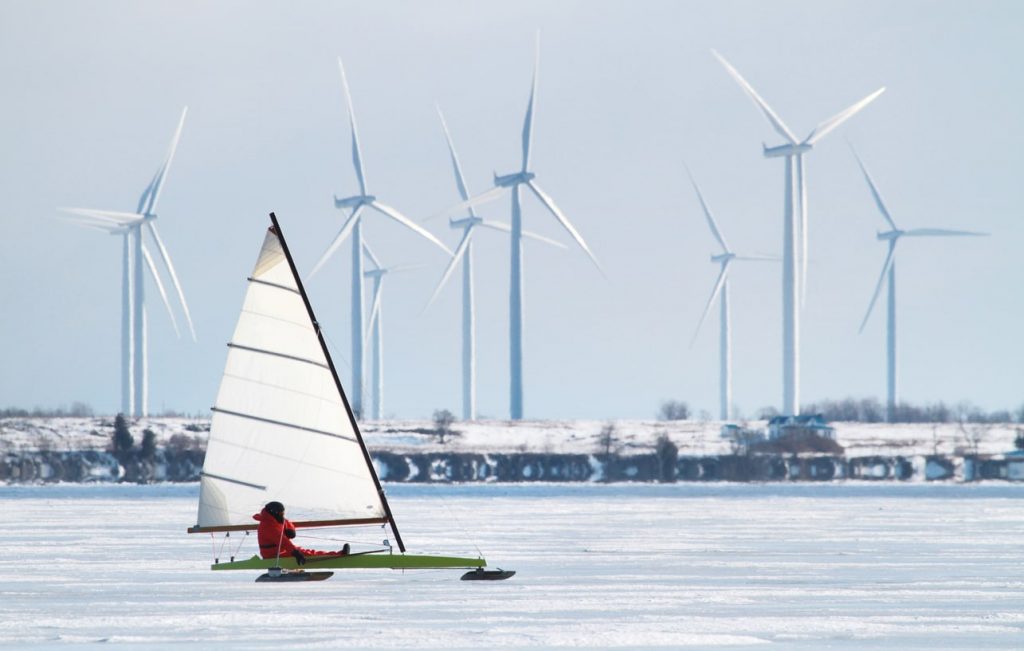When ordinary boating and sailing aren’t exciting enough, some people take to the frigid waters for a little extra challenge. Thrill-seekers are quite attracted to iceboating! This sport is becoming more popular with the new generation of sailors, even for those who can pursue the activity only one or two weekends a year. The ice boat itself, looks like a cross between a soft-water vessel and a sleigh.
We may not see many ice floes in the waters of California, but if you’re planning on doing any winter destination boating, this could be something that you could participate in. However, with extra excitement often comes extra hazards. Let’s drive into some ins and outs.
The Form of the Boat
An ice boat has four basic parts. The main body of the vessel, as with any watercraft, is known as the hull. Modern-day boats often are made out of fiberglass or laminate material. No matter how it’s constructed, the hull must be able to support one or two crew members, usually in a small cockpit situated a foot or two above the ice. It must also be able to float in the event a boat finds itself in soft water.
The steering runner comes equipped with a parking brake to prevent the wind from carrying a boat away during loading or at the start of a race. The runners look and function like big skates, allowing the boat to glide with little friction over the surface of the ice.
The sail, made of canvas or synthetic fabrics, functions as the “engine” of an iceboat. Based on factors such as sail size and hull design, iceboats fall into different categories. The largest boats are stern steerers and the other is bow steerers.
The bottom line? A sailboat or other type of ordinary boat will not be suitable for iceboating. If you plan on participating in this activity, no matter how much boat insurance you have on your personal watercraft, it’s likely that you’ll need to rent or purchase a boat specifically designed for it.
Boating Techniques
Sailors must properly orient the craft to capture enough wind to generate thrust. Sails propel a boat in one of two ways. The first, sailing downwind, occurs when the sailor lets out the mainsail to trap the moving air, which pushes the vessel in the direction of the wind.
A sail can also propel a boat sailing upwind, where the boat often uses a zigzagging technique, and the mainsail acts like a vertical wing, generating lift as the air moves over the top of the sail and down its curved surface. Because the sail is oriented upward, the “lift” is directed horizontally, pulling the boat along the ice.
It’s crucial for an ice sailor to understand sail aerodynamics and how to use the wind effectively. To get the boat moving, a sailor stands next to the vessel, releases the brake, holds the tiller and pushes, first into the wind and then at an angle to the wind. When the boat begins to move briskly, they jump in.
Steering is accomplished via a lever that’s accessible in the cockpit. Without the natural resistance of soft water, it can be challenging to steer and requires a delicate hand to avoid spinning out of control.
Safety When Boating with Ice
Skimming at highway speeds over a sheet of ice is a risky activity. Right-of-way rules govern approach and passing so that boats maintain safe distances. Right-of-way rules for ice sailing are similar to “rules of the road” or corresponding rules for soft-water boating and windsurfing.
Never be the only one on the ice! If you fall into soft water, with no one around to help, you risk serious injury and even death. Iceboating requires high-quality ice. Before going out, make sure you understand the ice conditions where you intend to sail. Proper safety equipment and winter clothing are vital!
About Mariners Insurance
Mariners General Insurance Group was founded in 1959 to protect boat owners and marine business clients. We are marine insurance experts and insure boats worldwide – in every ocean on the planet. Marine insurance is critical if you own a boat or nautical business. Trust the professionals with all of your Boat Insurance needs – trust Mariners Insurance. Call us at (800) 992-4443 any time you have questions or concerns about insurance for your vessel or marine business.



